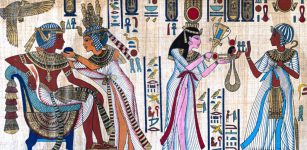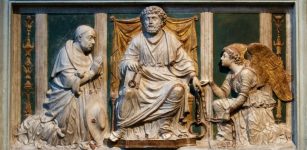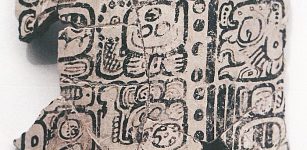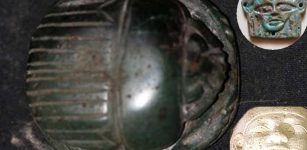Daily Life Of Priests And Priestesses In Ancient Egypt
Angela Sutherland - AncientPages.com - In ancient Egypt, where religion was an important part of daily life, everything focused on pleasing the gods.
Certain gods such as Bes and Tawaret who protected ordinary people in their daily life were worshiped privately in their homes.
Priests Performing Funeral Rites. Image source
Egyptian priests devoted their lives to the gods and goddesses and some official gods like Horus, Bastet and Amun were worshiped by the pharaoh and priests in large temples.
When a god decided to take a temporary, earthly dwelling within a statue, the priests should wash the statue, dress it, and serve it the best delicious food.
Every temple had several small (about 22 inches tall) statues of different gods that were the focus of the worshiper’s daily and seasonal rituals.
Why Was Extreme Hygiene Of A Priest Crucial?
It was believed that the human world was rather dirty, so priests and priestesses had to take care of the temple and the statue of the god within it.
Each statue was cleaned every day with lotus-scented water, anointed with oil, dressed and decorated with jewelry and make-up. Also, priests themselves would be extremely clean throughout the body.
The Greek historian, Herodotus (ca 480-420 BC) who visited many Egyptian temples during his traveling, wrote: "they bathe in cold water twice a day and twice a night…"
Rich temples had their own holy lakes where the priests had to bathe. If a temple was not rich enough to have its own lake, the priests had to settle for a sink. But Herodotus wrote that it was not enough with a bath:
"The priests circumcise for purity because they prefer purity in front of comfort. They shave everywhere on their bodies, at least every other day to avoid lice and anything else that's as unpleasant… "’
Interestingly, some temples had very strict rules and required that the priests also shaved eyebrows and eyelashes.
Priests of both sexes usually spent several hours practicing the songs and dances to please the gods.
Most Egyptian Priests Lived Ordinary Lives Outside The Temple Walls
About 1319 BC when Pharaoh Horemheb ruled the country, the number of priests in Egypt had reached more than 100,000, but many of them were free citizens and only worked in the temple for a longer or shorter time.
Painting of Prince Khaemwaset (Setne Khamwas) from the 20th Dynasty in his tomb (QV44). Image source
When the priest or priestess did not dance, sing or sacrifice to the glory of the deity, he or she was busy with inspection of local farms and fields, owned by the temple, or had responsibilities regarding craftsmen and hunters.
A priest, who was not on duty, was allowed to live a normal life, and marriage was permitted.
When it was time to serve God again in the temple, the skin would be completely smooth and clean; the priest would abstain from sex for at least one day before the holy duties were resumed.
Embalming, Spell Formula And Sick Visits
The Egyptian funeral ritual took place outside the temple walls. The priest had to supervise the embalming act, visit sick people, and pronounce spells that would bring the deceased safely to the other side.
Food Ceremony In The Temple
Food was served for the god three times a day and breakfast preparations started always a few hours before dawn. The gods were served fresh meat every day, and different fruits were served on barrels richly decorated with fresh flowers. The temple’s own bakery delivered fresh bread, pastry makers prepared sweet cookies, and beer and wine were served.
After the meal was finished, the priests and all employees could begin to eat.
Not all priests ate much and many of them especially those deeply devoted to the priesthood, satisfied themselves with bread and water, only.
Written by – A. Sutherland - AncientPages.com Senior Staff Writer
Copyright © AncientPages.com All rights reserved. This material may not be published, broadcast, rewritten or redistributed in whole or part without the express written permission of AncientPages.com
More From Ancient Pages
-
 Ancient DNA Reveals A 50,000-Year-Old Secret And Re-Writes History Of Australia
Archaeology | Mar 8, 2017
Ancient DNA Reveals A 50,000-Year-Old Secret And Re-Writes History Of Australia
Archaeology | Mar 8, 2017 -
 Letters Reveal How Ancient Egyptians Argued With Friends And What Angered Them
Civilizations | Oct 18, 2020
Letters Reveal How Ancient Egyptians Argued With Friends And What Angered Them
Civilizations | Oct 18, 2020 -
 Submerged Roman Villa Discovered On The Coast Of Cerveteri, Italy
Archaeology | Jun 6, 2024
Submerged Roman Villa Discovered On The Coast Of Cerveteri, Italy
Archaeology | Jun 6, 2024 -
 Rock Stars: How A Group Of Scientists In South Africa Rescued A Rare 500 Kg Chunk Of Human History
Featured Stories | Oct 20, 2022
Rock Stars: How A Group Of Scientists In South Africa Rescued A Rare 500 Kg Chunk Of Human History
Featured Stories | Oct 20, 2022 -
 New Paintings And Details Uncovered In The Egyptian Temple Of Esna
Places | Oct 22, 2024
New Paintings And Details Uncovered In The Egyptian Temple Of Esna
Places | Oct 22, 2024 -
 Ancient Mystery Of The American Southwest – Secrets Of The Cliff Dwellers – Part 1
Civilizations | Jul 23, 2018
Ancient Mystery Of The American Southwest – Secrets Of The Cliff Dwellers – Part 1
Civilizations | Jul 23, 2018 -
 Nicholas Of Cusa – A Medieval Scholar And Mystic With Highly Unorthodox Ideas
Featured Stories | Aug 13, 2021
Nicholas Of Cusa – A Medieval Scholar And Mystic With Highly Unorthodox Ideas
Featured Stories | Aug 13, 2021 -
 Empusa – Shape-Shifting Evil Female Demon In Greek Myth And Folklore
Featured Stories | Jun 3, 2020
Empusa – Shape-Shifting Evil Female Demon In Greek Myth And Folklore
Featured Stories | Jun 3, 2020 -
 Glastonbury Tor – One Of The Most Mysterious Sacred Places In England
Civilizations | Aug 30, 2018
Glastonbury Tor – One Of The Most Mysterious Sacred Places In England
Civilizations | Aug 30, 2018 -
 Ancient Roman Wine Was Spicy And Smelled Like Toast – Dolia Vessels Reveal
Archaeology | Jan 25, 2024
Ancient Roman Wine Was Spicy And Smelled Like Toast – Dolia Vessels Reveal
Archaeology | Jan 25, 2024 -
 Evidence Of Advanced Military Robots In The Ancient World – Unknown High-Tech Examined
Ancient Technology | Jan 13, 2021
Evidence Of Advanced Military Robots In The Ancient World – Unknown High-Tech Examined
Ancient Technology | Jan 13, 2021 -
 Painted Komkom Vase With Longest Hieroglyphic Text Unearthed In Belize
Archaeology | Apr 24, 2019
Painted Komkom Vase With Longest Hieroglyphic Text Unearthed In Belize
Archaeology | Apr 24, 2019 -
 Amulets, Figurines Discovered In Recently Unearthed Limestone Sarcophagus In Minya, Egypt
Archaeology | Oct 15, 2020
Amulets, Figurines Discovered In Recently Unearthed Limestone Sarcophagus In Minya, Egypt
Archaeology | Oct 15, 2020 -
 Controversial Unexplained Ancient Mystery In Mongolia – Discovery Of Remarkable Secrets Hidden In Artificial Cave – Part 1
Featured Stories | May 1, 2018
Controversial Unexplained Ancient Mystery In Mongolia – Discovery Of Remarkable Secrets Hidden In Artificial Cave – Part 1
Featured Stories | May 1, 2018 -
 Secret Ancient Knowledge Of The Druids And The Mystery Of The Missing Library Of Iona
Artifacts | Sep 4, 2016
Secret Ancient Knowledge Of The Druids And The Mystery Of The Missing Library Of Iona
Artifacts | Sep 4, 2016 -
 35,000 Unique Artifacts Discovered In 720-Year-Old Iroquoian Village In Canada
Archaeology | Oct 24, 2020
35,000 Unique Artifacts Discovered In 720-Year-Old Iroquoian Village In Canada
Archaeology | Oct 24, 2020 -
 Food In Ancient Roman Funerary Meals Was Similar To That Consumed During Life
Archaeology | Aug 30, 2022
Food In Ancient Roman Funerary Meals Was Similar To That Consumed During Life
Archaeology | Aug 30, 2022 -
 Children Of Lir And Aoife’s Curse – Celtic Legend That Inspired The Swan Lake Ballet
Myths & Legends | Feb 8, 2024
Children Of Lir And Aoife’s Curse – Celtic Legend That Inspired The Swan Lake Ballet
Myths & Legends | Feb 8, 2024 -
 Pazzi Conspiracy – Failed Murder Attempt On Lorenzo de’ Medici Made Him Even More Powerful And Threw Renaissance Florence Into Chaos
Featured Stories | Jun 14, 2024
Pazzi Conspiracy – Failed Murder Attempt On Lorenzo de’ Medici Made Him Even More Powerful And Threw Renaissance Florence Into Chaos
Featured Stories | Jun 14, 2024 -
 Mystery Of The Mandala: The Circle Of Life
Ancient Symbols | Jul 7, 2018
Mystery Of The Mandala: The Circle Of Life
Ancient Symbols | Jul 7, 2018


